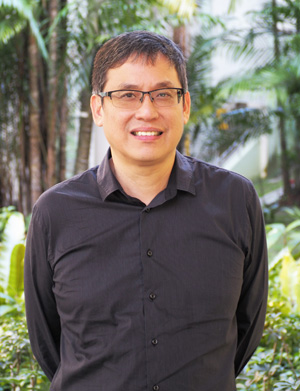Why Singapore’s English Teachers Should Embrace Singlish, Not Fight It
Is it time for Singaporean educators to embrace Singlish as a legitimate learning tool? What the Research […]
Read More
Intrigued by various student-centric approaches that may possibly help his students from the Normal (Technical) stream, a Math teacher worked with two NIE researchers to create a unique learning approach that combines team-based learning and productive failure.
Used by the Duke-NUS Graduate Medical School for teaching post-graduate students, team-based learning (TBL) is an approach that has been found to benefit students who are self-directed and independent learners.
When he learned about TBL, Math teacher Mr Christopher Chee was intrigued. Can this approach also benefit students who are academically weaker?
His curiosity did not stop there. Christopher also got to know the work that NIE Associate Professor Manu Kapur, Head of Learning Sciences Lab (LSL) is doing on productive failure (PF). Together with Manu and LSL Research Scientist Dr Rachel Lam, Christopher came up with a unique and blended learning approach that incorporates both PF and TBL.

A Math teacher at Spectra Secondary School, Christopher believes that student-centric approaches will benefit his Normal (Technical) students. PF is one such approach.
To fail is to learn. PF is about giving students a chance to apply concepts that have not yet been taught to them to solve problems. Manu’s research found that students may struggle and sometimes fail at solving the problem. But the failure may paradoxically deepen their subsequent understanding of the concept.
In other words, students can learn better when they are allowed to form their own ideas about a concept before the teacher intervenes with guided instructions.
“All this eliciting of ideas is really to help students learn and create knowledge and to see things on their own, before the teacher steps in to teach,” shares Manu.
Christopher decided to apply PF in his classroom to help his students understand and apply the mathematical concept of average.
During the initial exercise, students were presented with two bus options with different routes and schedules. They must then select the option with the shortest travel time based on average.
“Maximal learning occurs when team assignments such as this are characterized by a significant problem, a same problem, a specific choice, and simultaneous reporting,” says Christopher.
The exercise was conducted in groups of four to five students, and each group presented their answer to the class.
“Some students may have used a different process to arrive at the correct answer,” Christopher notes. “So the decision in making this specific choice is critical and can be understood by other pupils in the class when there is simultaneous reporting of the answer.”
After the “application” stage came the actual teaching and instruction. This is where TBL came in.
Employing the TBL method of instruction – made up of the student preparation and readiness assurance phases – Christopher gave his students instructional viewing guides and videos to watch before coming to class. This is followed by an individual test and a team test, which is the readiness assurance phase.
“The readiness assurance process was the part which got me going,” shares Christopher. “Most of the teachers who started on this weren’t very convinced whether it could work on our students.”
But Christopher wanted to use this strategy to prepare his students to learn the concept of “average” in a collaborative way – through a sequence of structured activities. And this method was proven effective as his students had the prior opportunity to apply the concept before it was taught.
“Because the students have already attempted the application and the individual tests, they now have to come together as a team and decide collectively what is the correct answer,” says Christopher. “In other words, there is a process of deliberation as some of them might have individually come up with different answers.”
One member from each team would also respond to another team’s answer. After that, the students arrived at the correct answer together as a class.
The team-test approach requires everyone to listen, and each student will be keen to know and debate the merits of someone else’s thoughts.
– Christopher Chee, Spectra Secondary School
Rachel feels that letting students engage in exploratory tasks at the onset of learning (the application part) gave them the chance to correct and elaborate on their knowledge during the readiness assurance phase.
“The readiness assurance process ensures that the content is effectively covered,” Rachel comments. “Students would have come prepared for the class and made attempts to figure out concepts on their own before the teaching takes place.”
One interesting observation Christopher made when trying out this model on his students is that the lowest team score was consistently better than the highest individual score.
“The team-test approach requires everyone to listen, and each student will be keen to know and debate the merits of someone else’s thoughts,” Christopher explains.
This, in turn, funnelled the thought processes of the students and helped Christopher zoom in to the central theme that was being taught.
Rachel is heartened to see that the work she, Christopher and Manu did is yielding evidence that successful learning can happen when students, even the academically weaker ones, have the opportunity to generate their own ideas and methods for solving problems before engaging in peer collaboration and receiving guided instruction.